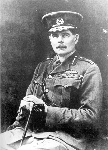Leyton & Leytonstone
Historical Society


First World War stories from St Mary’s Leyton churchyard
Albert Edward Austin (1895-1918) continued

Pressure had been mounting for several years for a unified air service. In 1913 Germany spent seven times more on air forces than Britain. Zeppelin raids on London in 1915 and 1916 had been followed by destructive daylight bombing raids in the summer of 1917 which killed over 500 people and dropped 162 tons of bombs. 17,000 officers and men were allocated to home air defence. Lloyd George, the Prime Minister, asked General Jan Christian Smuts to report on how air defence problems could be solved ‘quickly’. Two reports came out in summer 1917 and the recommendations, accepted by the government, were for an Air Ministry and the amalgamation of the RFC and RNAS into a new independent air service. The primary role of the RFC had been reconnaissance and thus its successor was inevitably closely linked to land operations with a lesser naval role. The RAF took over direct support of ground forces on the Western Front.
The first Air Chief of the RAF was Major General Hugh Trenchard, (pictured right) formerly of the Royal Scots Fusiliers who had learned to fly aged 39 and became the Deputy Commander of the Central Flying School before taking control of the RFC in August 1915.

image from Wikimedia
Albert Austin died at the age of 24 on 21 November 1918 in the 4th Northern General Hospital, Lincoln. The cause of death is recorded as influenza and bronchopneumonia . By that time he had married and his wife was living in the centre of Lincoln at 30 Greetwell Gate.
The infectious disease termed ‘Spanish’ influenza (flu) raged from 1918 – 1920 infecting 500 miliion people worldwide even in the remotest parts of the globe, and killing between 10-20% of this number, equivalent to 3 – 5% of the global population. Flu killed more people than the war. From 1918 onwards there were three great pandemic* ‘waves’ occurring in the northern hemisphere seasons of spring/summer; summer/autumn and winter respectively. These first two time periods are normally unfavourable to flu viral spread.